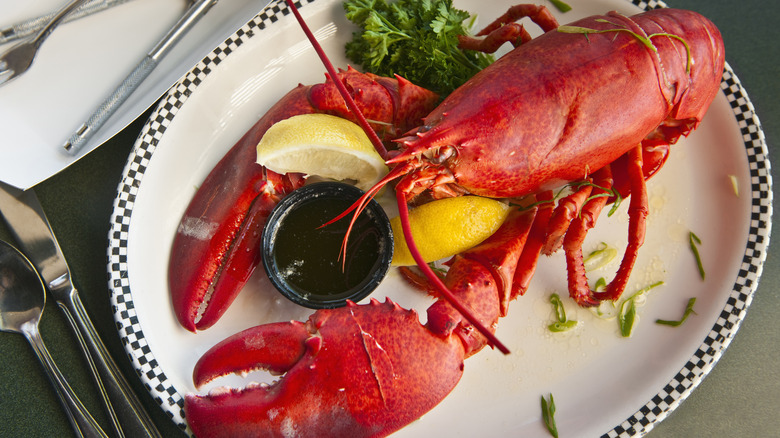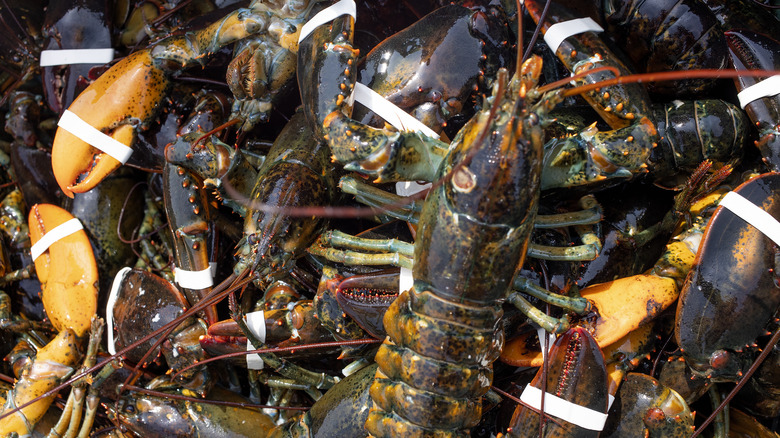Why The Biggest Lobster Isn't Necessarily The Best
Lobster is rich, not just because of its succulent, buttery meat, but because it projects a sense of luxury. It can be tempting, then, to put on the most opulent display possible by serving the biggest lobster you can find. But bigger doesn't always mean better. In fact, assuming this is one of the most major mistakes you can make while buying seafood.
A lot of chefs and cooking content creators argue that the bigger a lobster gets, the tougher and less sweet its meat becomes. This is in part due to the fact that as lobsters grow, they repeatedly shed and regrow their shells. This molting cycle happens frequently in the lobster's youth, but slows down as it ages. If you find a really big lobster, it probably hasn't shed in years, which means the meat will be tougher.
You can sometimes find large lobsters that have recently shed their shells, but even then, they're more likely to produce tough meat. The muscle fibers in a large lobster are thicker, and therefore tougher. Bigger lobsters also lead to problems when cooking because by the time heat penetrates all the way through the lobster, the meat closest to the shell will be overdone. Unless you want to make a lobster version of Anthony Bourdain's stunt turkey, this simply will not do.
What is the best size of lobster to buy?
Since bigger doesn't mean better in the world of lobster, what size lobsters should you be buying? The first thing to know is that lobsters are lumped into a few different categories based on their size. The smallest ones are called "chickens," and they weigh in at 1 pound, which is the minimum size to legally harvest a lobster. Larger chickens are "quarter" and "half" lobsters, which are deceivingly named. These are not lobsters cut into quarters or halves — rather, they're lobsters that weigh 1 ¼ and 1 ½ pounds respectively. Lobsters weighing in at 2 pounds are called "deuces," while 3-pound lobsters are known as "jumbos". Above jumbos are the 6 pound-plus "super jumbos," which are more likely to land on the tougher side.
Ideally, you want to get an individual lobster for each diner, so that everyone can enjoy all the parts of the meat. For most people, a deuce is going to be the ideal serving size. It will yield close to 7 ounces of actual meat. If you want to take the easiest approach and avoid considering lobster sizes altogether, you can purchase lobster tails, which are generally considered the most flavorful part anyway. It's also easy to prep and grill lobster tails, thus making sure that everyone at dinner gets a bite of sweet, tender meat.

